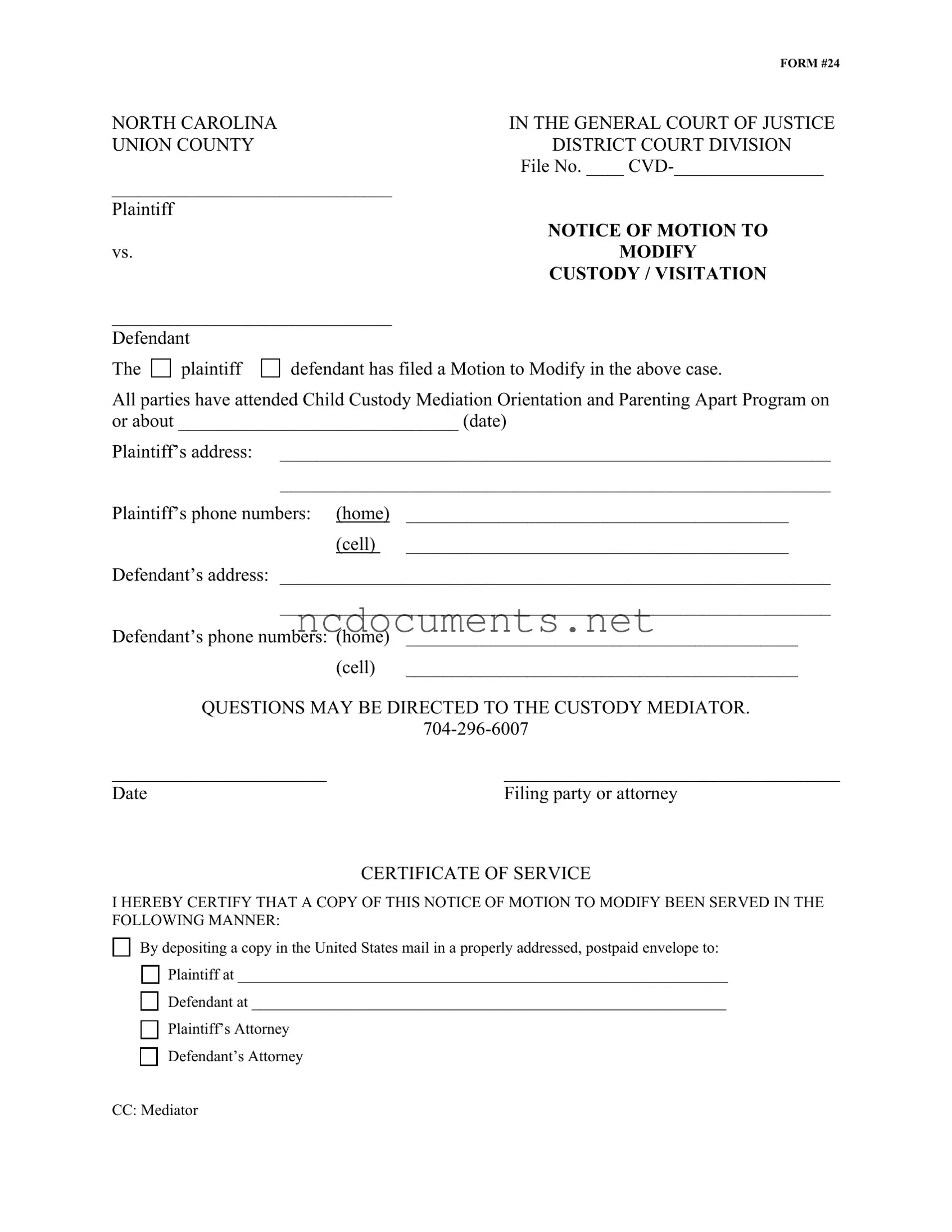Filling out the North Carolina 24 form can be a straightforward process, but many people make common mistakes that can lead to delays or complications in their custody or visitation modification requests. One frequent error is neglecting to provide complete and accurate information. For instance, missing details such as the case file number or the specific date of the mediation can create confusion and hinder the progress of the case.
Another common mistake involves not updating contact information. It is crucial to ensure that both the plaintiff's and defendant's addresses and phone numbers are current. If these details are outdated, it can lead to difficulties in communication and notification about court proceedings.
Some individuals also fail to sign the form properly. A signature is essential, and without it, the form may be deemed incomplete. This can result in the court not accepting the motion, forcing the party to start the process over again.
Additionally, people often overlook the importance of the certificate of service section. This part confirms that all parties involved have received a copy of the notice. Failing to fill this out accurately can lead to disputes about whether proper notice was given, potentially affecting the outcome of the case.
Another frequent issue is not including the date of filing. This date is critical as it establishes the timeline for the court's consideration of the motion. Without it, the court may not process the request in a timely manner.
In some cases, individuals might not attend the required Child Custody Mediation Orientation and Parenting Apart Program before filing. This step is mandatory, and skipping it can result in the court rejecting the motion outright.
Misunderstanding the purpose of the form can also lead to mistakes. The North Carolina 24 form is specifically for modifying custody or visitation arrangements. Attempting to use it for other purposes can create confusion and delay.
Another mistake involves not providing sufficient details about the requested changes. Simply stating that a modification is needed without explaining why can leave the court with unanswered questions. Clarity and specificity are key to helping the judge understand the situation.
Some individuals may also forget to include the mediator's information in the certificate of service section. This detail is important, as it ensures that all parties, including the mediator, are kept in the loop regarding the motion.
Finally, not reviewing the completed form for errors before submission can lead to oversights that may be easily corrected. Taking the time to double-check the form can save time and prevent unnecessary complications down the line.
